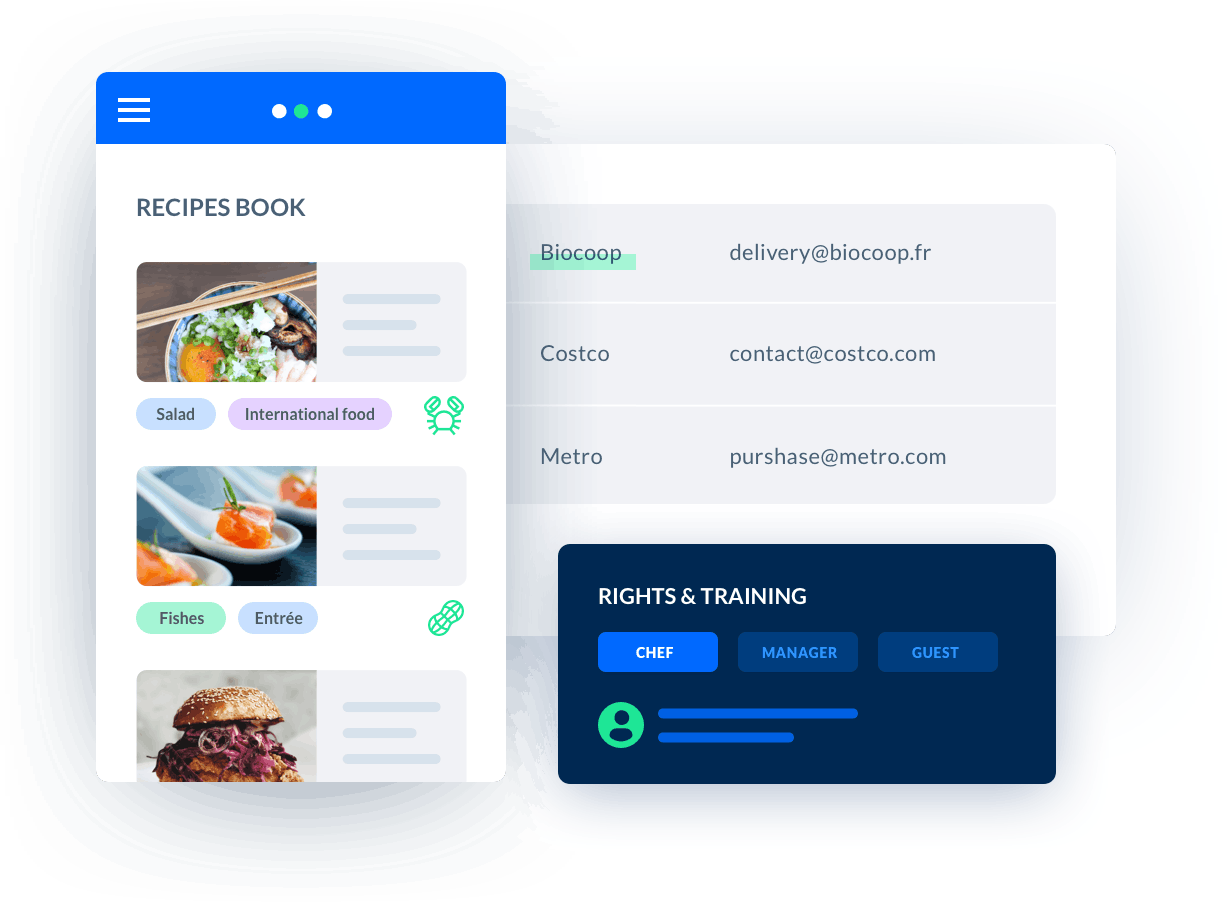how to calculate menu price
When it comes to calculating menu prices for your catering business, there are several factors to consider.Properly pricing your menu items is essential for the profitability and success of your business.

Melba : Features related to menu engineering
Discover melba's features related to menu engineering

Better manage your recipe knowledge with data sheets: everything you need to know
How to better manage its knowledge recipe
When it comes to calculating menu prices for your catering business, there are several factors to consider. Properly pricing your menu items is essential for the profitability and success of your business. In this comprehensive guide, we will take you through the step-by-step process of calculating menu prices, ensuring that you make informed decisions that align with your business goals.
Understanding Food Cost Percentage
Before diving into the specifics of calculating menu prices, it is crucial to understand the concept of food cost percentage. Food cost percentage refers to the proportion of your total food cost to the revenue generated from selling your menu items. It is typically represented as a percentage and is used to determine the profitability of your menu items.
Calculating food cost percentage involves the following formula:
- Food Cost Percentage = (Total Cost of Ingredients / Selling Price) x 100
By knowing your food cost percentage, you can ensure that your menu items are priced appropriately to cover your expenses and generate a profit.
Step-by-Step Guide to Calculating Menu Prices
1. Determine Your Desired Food Cost Percentage
Start by establishing the food cost percentage you aim to achieve. This percentage will depend on various factors such as your overhead costs, desired profit margin, and industry standards. Typically, food cost percentages range between 25% to 40%, but it ultimately depends on your unique business needs.
2. Calculate the Cost of Ingredients
To calculate the cost of ingredients, you need to consider the individual costs of each component used in a menu item. Ensure that you include all ingredients, including spices, garnishes, and condiments. Accurate record-keeping and a comprehensive inventory system will greatly assist in determining ingredient costs.
Consider the following example:
- Ingredient A: $2
- Ingredient B: $3
- Ingredient C: $1
Therefore, the total cost of ingredients for the menu item is $6.
3. Determine the Selling Price
Once you have calculated the cost of ingredients, you can determine the selling price. Remember, the selling price should cover the cost of ingredients, as well as other expenses such as labor, overhead costs, and desired profit margin.
Using the food cost percentage formula mentioned earlier, you can rearrange it to calculate the selling price:
- Selling Price = (Total Cost of Ingredients / Food Cost Percentage) x 100
For example, if your desired food cost percentage is 30%, the selling price would be:
- Selling Price = ($6 / 0.30) x 100 = $20
Therefore, the selling price for the menu item would be $20.
4. Consider Menu Engineering Techniques
Menu engineering involves strategic placement and pricing of menu items to maximize profitability. By analyzing the popularity and profitability of each menu item, you can make informed decisions on pricing and promotion. Consider utilizing techniques such as highlighting high-profit items, bundling complementary items, or adjusting prices based on demand.
Factors to Consider
1. Competition
Research and analyze the pricing strategies of your competitors within the catering industry. While it is essential to stay competitive, avoid underpricing your menu items as it may devalue your brand and compromise profitability.
2. Target Market
Understanding your target market is crucial when determining menu prices. Consider factors such as income levels, location, and preferences. If your target market consists of high-income individuals, you can price menu items accordingly.
3. Seasonality
Seasonal fluctuations can impact ingredient costs and demand for certain menu items. Adjust your prices accordingly to account for these variations and maintain profitability throughout the year.
Conclusion
Calculating menu prices is a vital aspect of running a successful catering business. By understanding food cost percentage, following a step-by-step approach, and considering various factors, you can ensure that your menu items are priced appropriately. Regularly review and adjust your menu prices to adapt to market changes and maintain profitability in the competitive catering industry.






